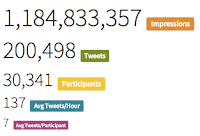A framework for exploring health
Health is a function of Being, Doing and Environment. I want to encompass the many ways we might define health, what we do about it and the activities that address health. The larger environment in which we live is also important. These interact and further shape each other.
Health
Health is a way of being and an attitude as well as a result of the actions we take or don't take and the environment in which we live.To say "I am healthy" is itself complex. Does it mean I feel well? That I have no limitations on my activity? That I am free of disease or disability? Or that I have accommodated and compensated for my various diseases and disabilities?
Health is both broad and specific with a wide range of determinants of health. Here are a couple of examples work on this: Healthy People 2020 and Schroeder: We Can Do Better, Improving the Health of the American People, NEJM 2007.
Being
Who and what we are at this moment and the personal history that got us here.- Personal values and goals - what health is to us, what's important to us, what we want to experience, what we want to leave as our legacy.
- Spirit - the innermost aspects of our being
- Mind - our state of mind, attitude, outlook, intellectual capabilities, interests, desires, mental health.
- Body - our physical body, it's current condition and history, our genetic inheritance, our various diseases and disabilities.
Doing
What we're doing now, our actions with ourselves, with others and in the larger world.
- Plans - in the boundary between Being and Doing, our plans are how we go from our intentions to action, although not everything we do is planned.
- Actions - what we're actually doing, with or without planning. The "behaviors" that are high on the list of health determinants and those that have no known effect on our health.
Included in here are the things we do to manage our health, from immunizations to exercise, from medication that changes our biochemistry to meditation that changes our mind, from surgery to assistive devices.
Our actions affect others as well as ourselves. They also shape the larger environment, our own and others.
Our actions affect others as well as ourselves. They also shape the larger environment, our own and others.
Environment
We live in an environment. The boundary between self and other is very fluid. We're completely interdependent with our environment. It's the context in which our actions take place. We can't take one breath without it. When we take advantage of it, the environment can make it easy to do the right thing, keep us safe and healthy, with no extra effort. On the flip side, the environment can be a real killer, from toxins that poison us to cultural norms that encourage risky behavior.
Feel free to comment here or on Twitter or LinkedIn. Thanks.
- Physical Environment - from our housing and food, from our zip code to climate zone - the place where we live, work and play - and the physical forces that surround us.
- Social Environment - our family, friends and neighbors. We can't life without other people, from our conception and birth through the whole of our life. The social forces that we interact with our powerful in shaping our behavior and our health.
- Access to Resources and Services - access is a combination of what's available and at what cost... including healthcare, education, employment.
- Public Policy and Public Health - what we collectively decide to do as a society
- Extrasomatic Intelligence - a fancy way to say that using our environment well can make us vastly smarter, from the written word to the most advanced analytics.
A work in progress
This is all a developing set of thoughts. I've had feedback about the diagram at the beginning of this post. More is welcome. I've received suggestions about the content. I'm not sure that Environment is the right label for the third section. Perhaps Connecting or Interacting or some other word that speaks to the interplay with the world around us.Feel free to comment here or on Twitter or LinkedIn. Thanks.





